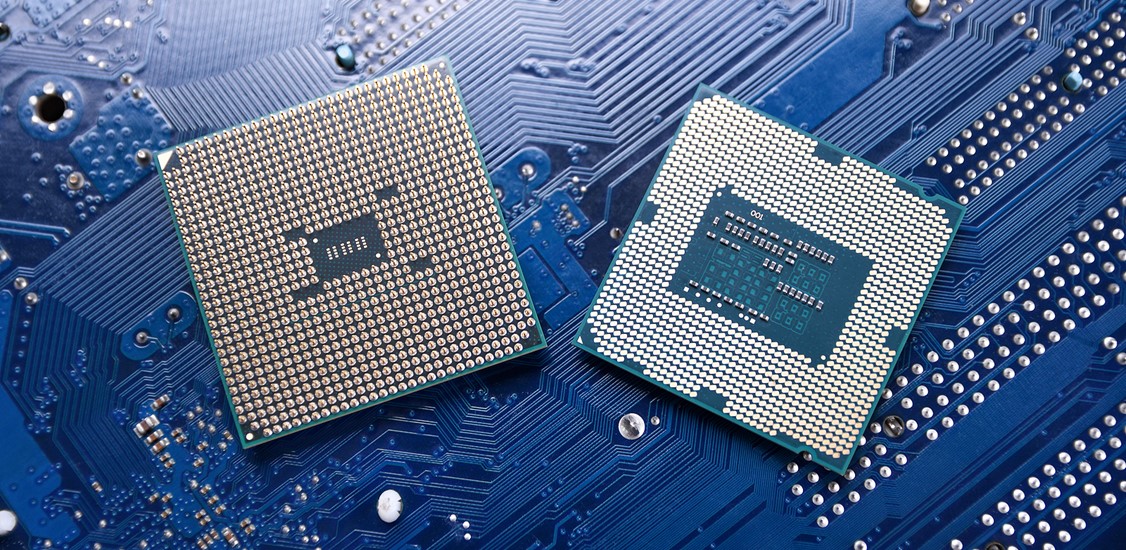Merriam-Webster’s 2021 word of the year is "vaccine." From the tech industry’s perspective, it should be "chips." The chip shortage has dominated global headlines for over a year and has revealed how reliant every facet of life is on chips and semiconductors. From new cars to toothbrushes and from ventilators to solar inverters, the chip shortage has impacted arguably every industry. Its ripple effects continue to cause disruption.
So, what caused the shortage in the first place? It’s easy to blame the pandemic but in reality many factors collectively contributed to this ‘perfect storm’ of supply chain disruption. Companies that manufacture chips, known as foundries or fabs, are highly optimized for efficiency and cost. But in the years leading up to the pandemic, a series of complex and interrelated stressors to the semiconductor ecosystem - geopolitics, changing industry trends, and natural disasters, to name a few - began to expose the cracks in this well-oiled machine. In 2020, the global COVID-19 pandemic simply pushed this strained supply chain to its limit.
An industry under growing stress
In normal times, companies throughout the semiconductor supply chain ran efficiently and lean through just-in-time inventory management and ordering practices. During the former US Administration, fears over US-China trade tensions began disrupting supply chains, triggering overordering and stockpiling to keep production lines running until tensions eased. Across industries, growing demand for smarter, connected, feature-rich products are requiring that more chips be used per product to enable these functions, consuming inventories for some chips faster than historic norms. Stockpiling and shifts in chip usage began to drain the naturally low supply of some chips, throwing it off balance. Second sourcing - a practice that prepares chip suppliers to quickly manufacture an alternative chip if the supply or manufacturing capacity of the primary chip process is at risk - would be an effective risk mitigation strategy against this supply-chain instability but isno longer common in the semiconductor industry today. In addition, through no fault of the pandemic, the number of force majeures - due to tsunamis, drought, earthquakes, floods, etc. - had and continue today to cause temporary setbacks in chip production.
Cue a global pandemic
In 2020, when the pandemic reached around the world, many fabs slowed and eventually stopped production of some chip processes, making it impossible for chip suppliers to meet demand for all customers. Remaining chip inventories were drained quickly. Some automakers cut chip orders in response to a drop in sales, losing their place in the queue when capacity was restored. It is not trivial for a fab to switch from making one set of chips to another, the underlying realignment creates significant delays. Early in the pandemic, the transition of billions of workers and students to at-home work and school environments created an overwhelming demand for laptops, communications equipment, TV sets, game consoles, and similar devices – creating even more unexpected competition for some chips.
For many industries, company shutdowns and the move to work-at-home had a massive impact on their productivity and bottom lines. For the semi manufacturing ecosystem, however, the impact of labor is limited largely to what happens after a die is manufactured. Fabs operate in hyper-clean environments, and they are largely automated. With PPE requirements already in excess of the medical industry, worker safety was never a concern. But once the chip’s die is cut from a wafer at the manufacturer, it moves to outsourced assembly and test (OSAT) suppliers which are labor intensive activities and thus were highly impacted by lockdowns in vendor countries.
So, on top of an industry stressed, the added stress of the pandemic brought chip manufacturing to a crawl. The impacts of low or no chip supply continues to ripple impacts throughout every industry - some hit harder than others based on available manufacturing capacity for the chips used in their product designs.
No miracle cure
Recovery from today’s shortage is likely to be just as varied and complex as its origins, with some markets recovering quickly and others lasting several years as they wait for manufacturing capacity to return. For those outside the industry, one simple question lingers: why don’t chip manufacturers just power-up more equipment or open more factories?
In fact, they are. Expansion is already underway for the top three chip manufacturers; all have announced large capital expenditure plans totaling nearly $150 B, which includes fabs in Arizona. [i] But bringing a new fab or new processes online is time-consuming and costly, making it an excellent long-term growth solution but not a short-term remedy for the shortage. In addition, most fab expansions – whether inhouse or newbuild – are also delayed by a large backlog in availability of semiconductor manufacturing equipment. (Very few industries are immune to the shortage.)
The semiconductor manufacturing industry has also been at center of national sovereignty issues recently, as countries want more control over the supply chain within their borders. The Arizona fabs are among a growing number of new fabs planned outside of Asia (US and Europe) to address this, but, per above, are limited in their ability to contribute to the end of the shortage.
Some good news: not all chips have limited manufacturing capacity. In fact, the worst shortages are not at the leading process nodes (3, 5 and 7nm) used in the latest generations of high-performance central processing units (CPUs), graphics processing units (GPUs) and baseband processors. But industries such as automotive and medical rely on chips that are fabricated on older process nodes, such as 65, 40 and 28 nm. Capacity for these nodes will be restored when fabs catch up. According to Gartner, the on-going chip shortage is primarily with mature semiconductor technology node devices that are fabricated on smaller 8-inch wafers, where capacity expansion is difficult [ii]. Over the next few years, or sooner if process migration has already begun, chips moving to newer nodes as part of normal roadmap development will free up even more capacity for the mainstream nodes common in automotive and healthcare.
Today both semiconductor companies and system companies designing their own chips face similar challenges to chip-shortage recovery: how to get more chips into the hands of customers ASAP.
Some are waiting it out. When weighed against the time, effort, and cost of another solution, waiting for capacity to return makes the best business sense – even at the expense of the impacts to supply chain or customers. Others are looking to FPGAs mounted on a pin-compatible mezzanine board plugged into the same chip socket. Still others may repurpose the functionality to a different chip in the family (if available) through software optimization. For most chips facing long-term shortage, however, a more durable solution involves migrating the original chip design to a different process with no manufacturing capacity issues.
Second sourcing is cheap insurance
Second sourcing, mentioned earlier, isn’t part of today’s chip design workflow for most chip design companies, but many are feeling the business consequences of that decision now. Having a second tape out ready – in an alternative process node – is a very effective risk mitigation tool to hedge against major manufacturing disruptions from any source. When undertaken during the main chip design workflow, the incremental cost of a well-planned second sourcing strategy is no more than 5-7% of the non-recurring engineering (NRE) cost. That’s cheap insurance against helping to restore supply in as little as one-third the time versus when there is no alternative tape out available.
Throughout 2022 and beyond, as chip supplies and demands are rebalanced, and life, work, and bottom lines return to a new normal, it will be tempting to forget the hard-won lessons of the past few years. Chips are at the heart of every digital product, and today’s intelligent products use even more chips than their predecessors – a trend that will only continue. So it’s crucial that the industry take systemic measures to avoid shortages as deep and widespread as today’s.
Whether a pandemic, natural disaster, or man-made faux pas, the next disruption is only a matter of when. The more resilient companies throughout entire semiconductor ecosystem can become, the more prepared they will be to adapt quickly, reducing bottom line impacts to their own company as well as rippling impacts in other industries. And some say that increasing agility, transparency, and preparation gives companies a competitive edge because they’ll be poised to adapt to meet demand in whatever form it comes next.
[i] https://www.dbusiness.com/daily-news/the-semiconductor-shortage-implications-for-the-global-economy/
[ii] https://www.gartner.com/en/newsroom/press-releases/2021-12-06-gartner-predicts-chip-shortages-will-drive-fifty-percent-of-the-top-10-automotive-oems-to-design-their-own-chips-by-2025






















